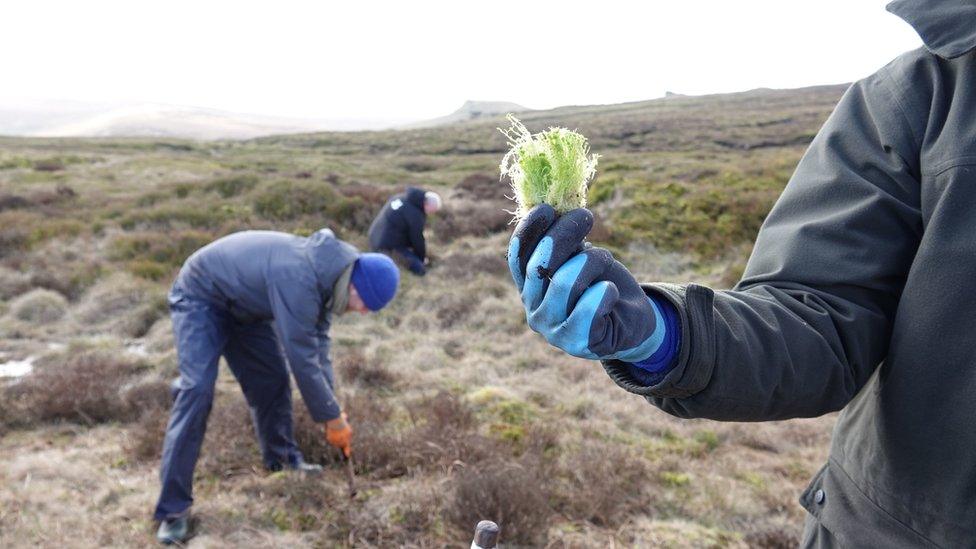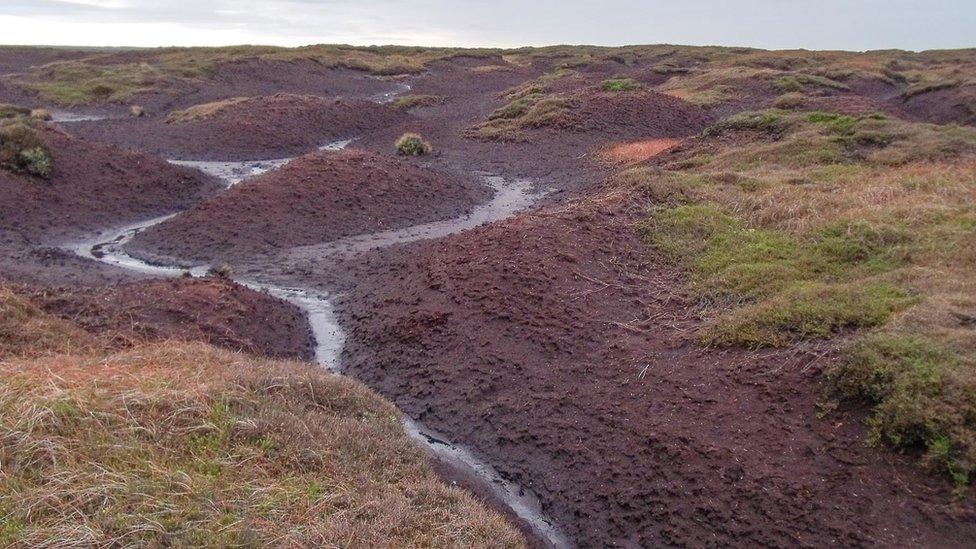Moss 'speed bumps' on Kinder Scout will curb flooding and restore peatland
- Published

A natural plan to slow down water falling on Kinder Scout has been announced
Sphagnum moss "speed bumps" are being planted across the slopes of a nature reserve in the Peak District.
Hundreds of thousands of green strips will slow water's progress down the inclines of Kinder Scout.
It's hoped the work by the National Trust will help restore 526 hectares of peatland.
The trust says the project will alleviate flooding in nearby towns and villages including Glossop, Whaley Bridge and Edale.
When established, The National Trust, which looks after Kinder Scout, says the moss will act as tiny "speed bumps" for rainwater falling on the moors.
Instead of running down in a straight line, the water will be forced to weave its way more slowly, rather than arriving in streams and rivers at once.

Kinder Scout peatland is being restored
The moss, which can hold up to 20 times its own weight in water, will also help create conditions for peat to form, allowing the site to better lock up carbon.
It will provide sufficiently wet conditions to allow a mix of moorland plants such as heather, bilberry and cotton grass to grow, and create habitat to support wildlife such as dragonflies, golden plover, frogs and lizards, the trust said.
Craig Best, general manager for the National Trust in the Peak District, said: "This year alone, we've seen dramatic weather events seriously affect thousands of households across the Midlands and beyond.
"As we're faced with the likelihood of more significant bouts of extreme rainfall, it is a stark reminder that we need urgent action to increase our resilience in a changing climate.

Plugs of moss up high can make a huge difference down in the valleys
"In good condition, the moorlands of the Peak District can offer part of the solution to reduce carbon emissions and reduce the risk of flooding for people living downstream, so it's vital that we continue to do as much restoration as quickly as we can."
Work is on pause until August due to ground-nesting birds' breeding season.
Other parts of the project, expected to be completed in 2025, include moorland planting, building dams in gullies, and restoring footpaths.

Follow BBC Derby on Facebook, external, on X, external, or on Instagram, external. Send your story ideas to eastmidsnews@bbc.co.uk, external or via WhatsApp, external on 0808 100 2210.